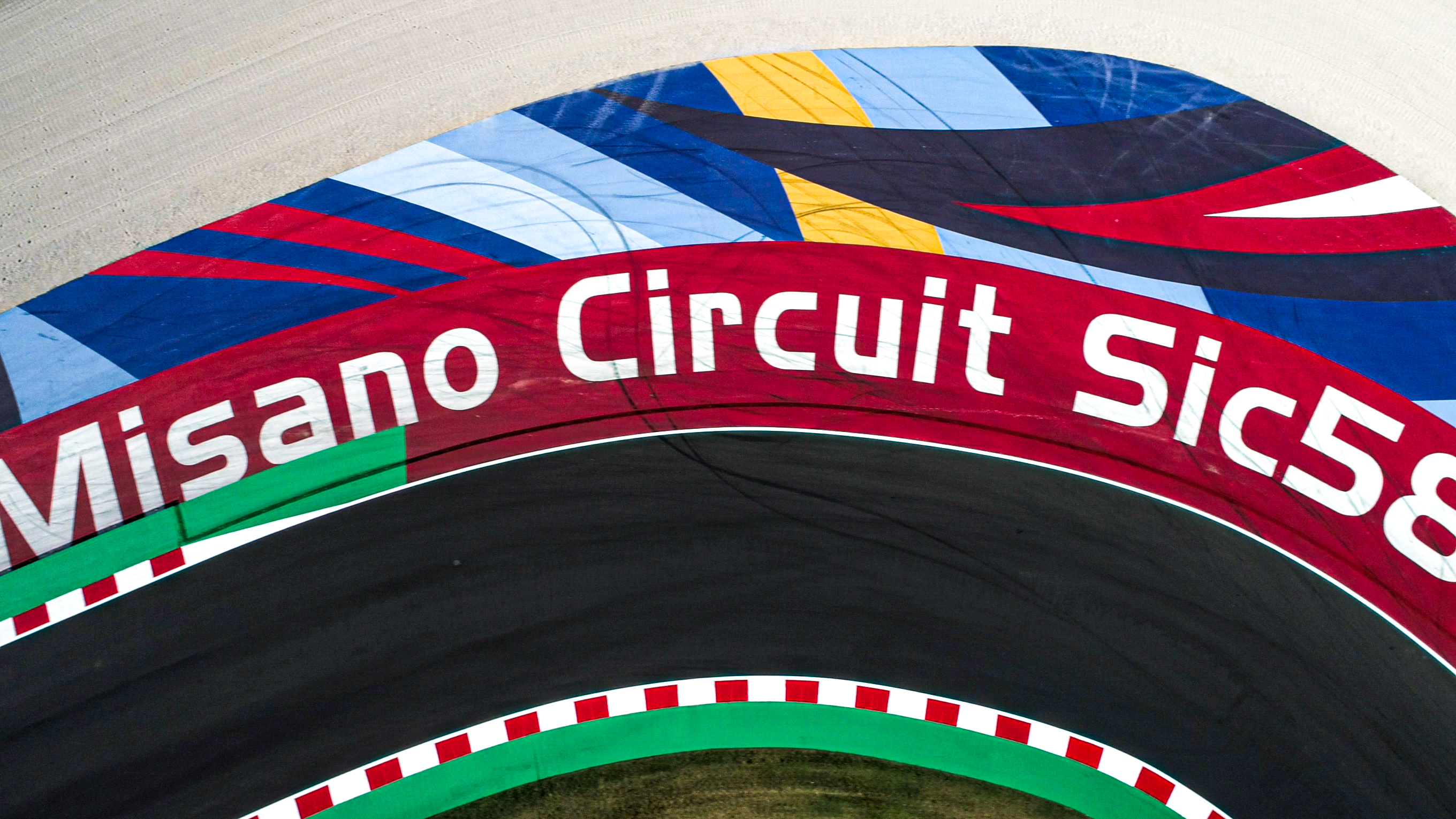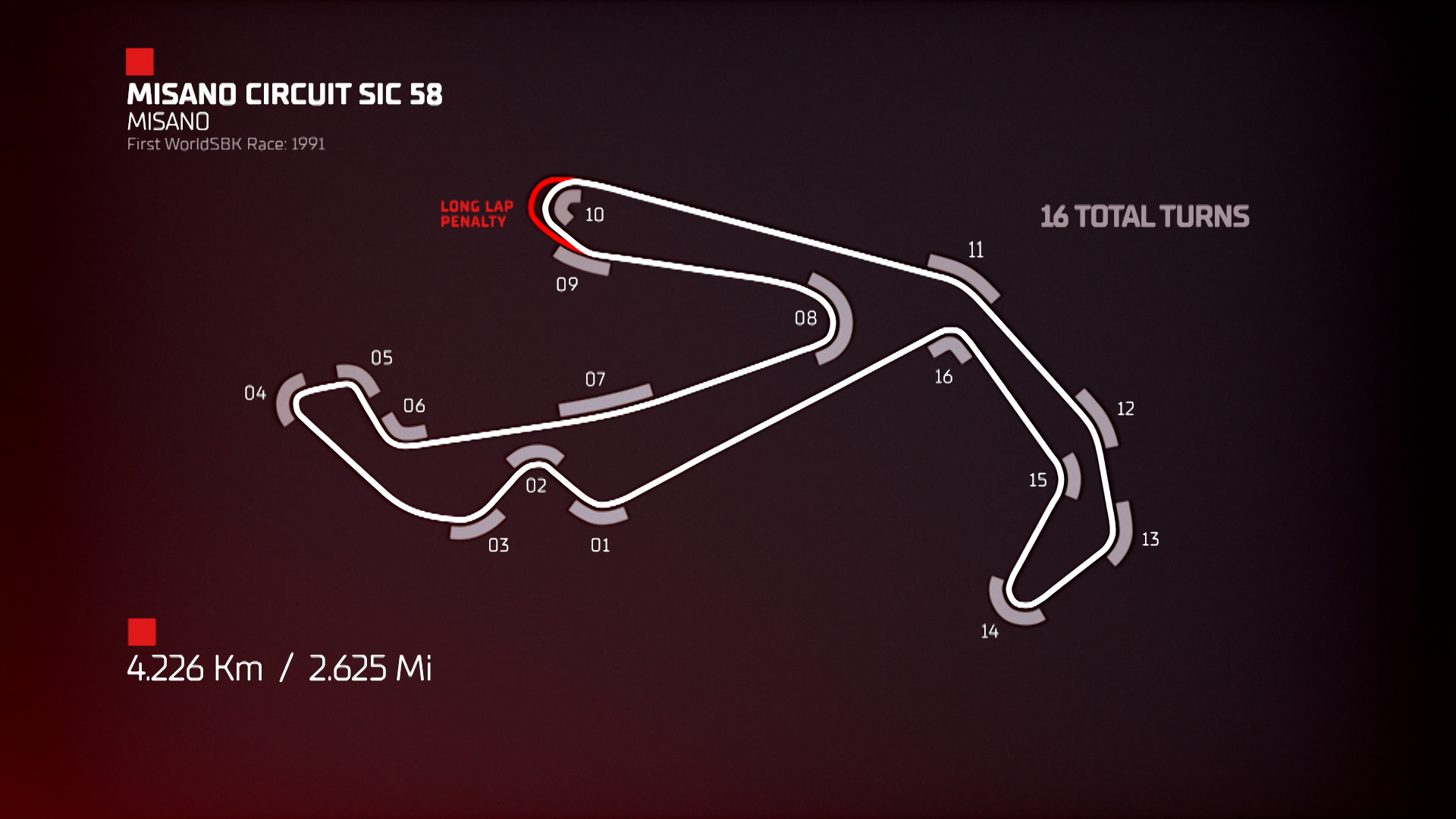TECHNICAL TRACK ANALYSIS: how does crew chief Pere Riba tackle Misano?
WorldSBK commentator Steve English caught up with Pere Riba, crew chief to Jonathan Rea, to ask the Kawasaki engineer about the biggest challenges that will face teams this weekend
The fourth round of the 2022 MOTUL FIM Superbike World Championship sees the paddock head to Italy to race on the Adriatic coast at the Misano World Circuit “Marco Simoncelli” for the Pirelli Emilia-Romagna Round. From the 4.2km long circuit you can see the ocean, and this creates a big challenge for teams and riders. The salty air degrades the track surface and this has meant that a unique asphalt is required and it was recently resurfaced.
INTRICACIES: how to tackle Misano’s nuances
“At Misano, they’ve got a new surface and the grip makes a big difference,” said Pere Riba, now working with Jonathan Rea for an eighth consecutive season. “For us, it can be good, Jonny has always been quite successful. It’s a track where handling is quite important, the engine is not as important as Aragon or Barcelona. Maybe we can really understand the bike and the balance. Misano is one of the tracks that we always look forward to.
“Last year the SCX tyre was quite difficult to use for different reasons. We spent the winter we had focussing on bike stiffness and bike balance, mostly with the suspension, to allow us to treat the rear tyre a little bit better. Our mechanical grip is quite good, but you have to treat the rear tyre smoothly in order to have good grip. Let’s see how it will be.”
NOT ALL ABOUT POWER: engine character is more important than power
“For Johnny, one of the most important points is to have good torque and a good feeling with the engine in trail braking. He rides the bike on the front end and he needs to have confidence on corner entry. We’ve made a positive step in this direction and at Misano, it’s a very important point. There are some areas here where you enter the corner quite fast, for example at Turn 1, it isn’t a hard braking zone, because the corner is quite fast. Getting the bike stopped and being able to turn into the apex is very important here and Turn 10 is the most important corner of the track because if you can hit your apex through here you exit the corner better. This is very important because it leads onto the back straight, any extra speed you can carry is important here. As everyone knows, Ducati has a very strong engine, Yamaha has made a step, so we have to minimise the loss in these areas.”
EVOLUTION: old dog, new tricks
The Kawasaki ZX10-RR has had some facelifts in recent years but overall, the bike has been around for a long time. The newer bikes from Honda and Ducati in recent have been revolutionary for those manufacturers whereas Kawasaki has been sharpening their Ninja without a massive upgrade. There will come a time for this to change but for now, Riba has been chipping away to find small improvements in lots of areas.
Last year we saw Rea have a number of high profile and highly costly crashes on the front end. As a result, Showa offered Kawasaki a major upgrade with their suspension. The biggest change was that the front fork is now more progressive with how it travels to the bottom of the stroke. For Rea, this has allowed him to be in a position to battle harder on the brakes without the fear of the front folding. Finding small areas of improvement in stability has helped the six-time Champion. Kawasaki also spent a lot of time working on rear stability with various swingarms during the winter to find the optimum solution to allow them to be more competitive on softer compound tyres.
“At the end of the day, you need to find the balance between the stability and turning, and this is what we always try to do, and it depends on the track. I’ve been working a lot this winter with Kawasaki, trying to understand that with a different track character and layout, you can use a base set-up and a different one. So, two set-ups. As I say, winter is winter and it’s cold. In the cold, everything is working well because the grip is there. Now the real battle is coming with hotter weather in the first races, and then we will still be understanding what we’ve been doing for wintertime.”
TRACK WALK: a time to build relationships
Last time out, Race 2 in Estoril, Rea made his 350th WorldSBK start. With a career now spanning fifteen seasons on the world stage there are very few lessons that the Kawasaki rider needs to learn about the circuits but there are always lessons for Rea and Riba to learn from analysing how they work and how they analyse their performance.
“We do a track walk at every round but Jonny knows all of the tracks very well so when we do this, we don’t talk each corner and how to ride there because we know them very well. When we walk the track as a team it’s more important for us to have fun and relax. We spend time with the data guys, the electronics guys, engineers, suspension technicians and this is the most important thing. More than the technical part. We don’t need to walk the track to know how we should ride at one corner or sector.”
It’s often overlooked in the success that Rea has had but for over ten years, Riba has kept his group of mechanics and engineers together by building these relationships with riders such as Joan Lascorz and Loris Baz before “Team 65” was created.
FROM THE GARAGE: a rider’s eye view
Whilst Riba is mostly known for his successful transition to crew chief, he was a successful rider in his own right. A race winner in WorldSSP, a British Supersport front runner and a former MotoGP™ rider, his talent allowed him overcome a late start in racing to become a factory test rider before switching to his role as crew chief. The role is often seen as a very technical role but, in an ideal world, it’s a management role. One where people skills are as important as technical skills. Organising the work plan for a team and getting the boxes ticked is critical and the human element is important to Riba who tries to learn lessons at any opportunity.
“Every person is different in life. My experiences have taught me a lot and my time with Jonny has given me some lessons. I love racing and I’m very passionate about it, but I’m also the kind of person who wants to learn something new every day. I think racing is experience. People in racing are so clever but without time they can’t help and improve. They need time. Every rider I’ve worked with has given me a different point of view. They all have different ways to ride the bike. Year-by-year, I feel more confident with myself but I’m still learning how to approach different situations.”
Watch the action LIVE and UNINTERRUPTED with the WorldSBK VideoPass!










